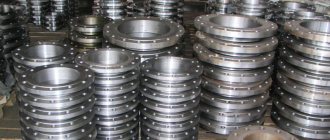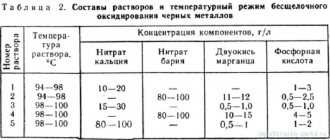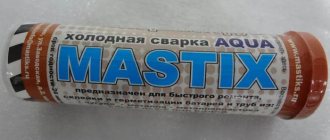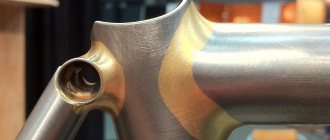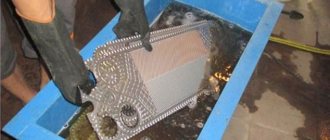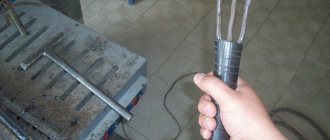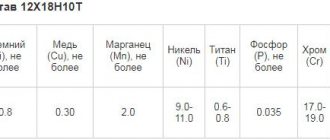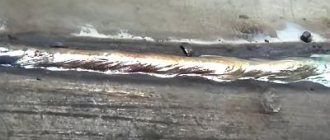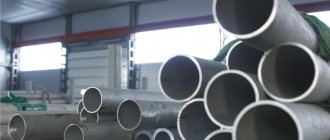Basic rules for cleaning stainless steel cookware
There are certain rules. Knowing them, questions like how to clean dishes will not arise. Let's look at the basic rules:
- Regular cleaning of dishes will help maintain their original appearance;
- use modern detergents, remembering to rinse them off with running water;
- Stainless steel should not be washed in the dishwasher, it is better to use the manual method, and the auxiliary means: a soft sponge and detergent;
- wipe the dishes with a dry cloth after washing, this way you can avoid drips;
- rubbing is carried out with point movements (dipping), but not in a circular manner;
- You can restore the previous shine by using potatoes cut in half.
You need to clean dishes according to certain rules.
It is strictly not recommended to: use abrasives, scrapers and hard sponges.
Photo tips on how to clean stainless steel
- Promotional codes and profitable promotions, how they allow you to save
How to sharpen a knife: step-by-step instructions on how to sharpen a knife quickly and easily (110 photos)
How to clean a computer - methods, rules and features of cleaning a computer and laptop from dirt, dust and unnecessary programs
What not to do
Now that we’ve sorted out the recommendations for proper cleaning of dishes, it’s time to move on to tips on what is not recommended to do. Please read the tips below carefully:
Scrapers
This is the main enemy for pans. When trying to get rid of carbon deposits, especially stubborn ones, the idea of using metal scrapers may seem like a good idea, but this is a misconception. After all, along with soot, you can literally scrape off part of the surface, which cannot be restored.
Scrapers can scratch the surface of the cookware.
Powders and abrasives
Powder products and hard sponges with a rough surface have a similar effect.
Do not use abrasive products.
Aggressive alkaline or acid-containing compounds
Such means may not cause any harm, but playing roulette is not always correct.
Note! It is best to use soft sponges and gel detergents.
It is recommended to use soft sponges and detergents.
What is not recommended for washing and cleaning the pan?
You should not use products containing abrasive particles to remove carbon deposits on stainless steel. They can leave scratches and other damage on the surface. This limitation applies to metal jaws and those equipped with a hard layer. The only place where they can be used is the bottom from the outside.
Some housewives choose the easiest way to wash pots - using a dishwasher. A good result will not work if you do not first soak the container in warm water. The purpose of the procedure is to soften the burnt layer of food and dried particles. Before loading into the washing unit, it is necessary to remove as much contamination as possible.
Experts do not recommend cleaning stainless steel dishes in automatic washing machines.
To clean stainless steel pans, you cannot use aggressive chemical compounds whose active substances react with metals. This applies to concentrated products based on acids, chlorine and alkalis, intended for stoves, tiles, and plumbing fixtures.
How to clean the inside surface of a stainless steel pan from carbon deposits
When cooking, carbon deposits can form not only outside, but also inside the pan. And if external contamination is mostly a matter of aesthetics, then internal contamination makes the pan practically unsuitable for further use.
The carbon deposits formed inside the cookware make it practically unusable.
Let's look at the most popular sources of problems with the inner surface of cookware and ways to eliminate them:
Burnt porridge that was forgotten
This happens quite often. The first step is to fill the pan almost completely with water and place it on low heat. As it boils, you need to carefully peel the porridge from the walls.
If the porridge is burnt, fill the pan with water and put it on fire.
When there are no solid particles left, drain the contents and, using folk remedies or household detergents, complete the cleaning.
You can complete the cleaning using folk or store-bought remedies.
Burnt from potatoes
We were cooking potatoes, got distracted, and when we remembered, we saw an unpleasant picture - the inside of the stainless steel cookware had turned completely black. Here the contamination will be more difficult to remove. But you need to act according to the same algorithm as in the previous paragraph.
Burnt from potatoes can also be removed by boiling.
The stainless steel frying pan is burnt
Unlike saucepans, frying pans can have a non-stick coating. But this cannot provide 100% protection against burning. If this happens, use the cleaning recommendations presented in the first paragraph and do not forget about a detergent that can handle grease.
There can be many options for why stainless steel cookware burns. But the most important thing is not to overdo it when trying to clean it and not damage the surface. Especially when it comes to non-stick pans.
A stainless steel frying pan can also burn.
Pros of a stainless pan
The demand for stainless steel cookware is due to a number of advantages that the alloy has. Steel pans benefit from aesthetics. The use of the latest technologies in production allows the manufacturer to implement the most daring design solutions. Stainless steel household items are easy to clean.
There is no fear that the protective coating will be damaged or scratches will remain on the surface. Due to the resistance of the alloy to the formation of microcracks, bacteria do not linger in the dishes. This fact indicates the hygiene of the pans.
An undeniable advantage is the long service life of stainless steel cookware. It can be used for decades without loss of quality. The alloy is not subject to oxidation, which eliminates the formation of rust. The secret of high corrosion resistance lies in the chromium content. It forms a thin film on the metal surface that performs protective functions.
With proper care, appearance does not indicate how long ago the cookware was purchased. It always looks like new.
One of the most important advantages of stainless steel pans is the fact that the alloy does not react with food. This eliminates the influence of metal on the taste of dishes prepared in steel cookware.
Strong arguments in favor of stainless steel are overshadowed by one nuance - the high thermal conductivity of the alloy. Because of this property, the pan is prone to burning. In order to eliminate such a nuisance, manufacturers make the bottom of 2-3 layers. The interlayers are made of metal with a lower thermal conductivity (copper, aluminum, etc.).
Cleaning the external surface from burning
There are different ways to clean the outer surface of a pan from carbon deposits: traditional methods, cleaning and detergents. There are a lot of options, but some of them are especially effective in combating specific types of pollution. For example, if we are talking about fatty products, you will need to use specialized detergents.
The outer surface can be cleaned with both folk and commercial products.
It's no secret that boiling can greatly simplify the process. Residues are cleaned with soft sponges. But there are special types of pollution. For example, jam. We'll look at how to deal with them below.
Features of tableware steel
If the dishes get dark - no problem! A stainless steel article is any type of iron-carbon alloy with the addition of chromium, which creates a protective, self-renewing anti-corrosion film on the metal surface. High-quality chrome-nickel steel alloy marked X18N10 (8/10) is used for the manufacture of cookware. This steel is distinguished by high levels of safety and durability, thanks to which, with proper care, even after decades, dishes made from it will not only retain a shiny appearance, but will also be environmentally friendly and safe for cooking.
Today, the range and scale of production of steel chrome-nickel cookware is incredibly extensive, thanks to its positive distinctive qualities. Of these, four main ones can be distinguished.
- Heat resistance. Steel 18/10 retains its nominal qualities over a fairly wide temperature range. This allows you to use such dishes equally effectively both at negative temperatures, for example, in the freezer, and at high temperatures - in the oven.
- Wear resistance. Steel alloy is one of the strongest and toughest. Such dishes are resistant to deformation, scratches, chips and other mechanical damage, which is very important in everyday life. Steel pots and pans can be used when cooking on different types of stoves: gas, induction, glass-ceramic.
- Corrosion resistance. High resistance to moisture, acids and alkalis makes steel an ideal choice for making tableware, because kitchen utensils are most susceptible to the aggressive influence of food acids, detergents and liquids.
- Hygiene. The high density of the metal and polishing of stainless utensils to a mirror shine makes them resistant to the accumulation and spread of harmful microorganisms. In addition, numerous studies have proven the bacteriostatic properties of steel, that is, its ability to prevent the development of pathogenic microbes.
Steel cookware also has features depending on the surface treatment method:
- polished products retain heat longer and are more hygienic;
- matte products are more resistant to mechanical damage.
Steel cookware does not change the taste of food either during cooking or even during long-term storage. In addition, during cooking in such a pan or when frying in a frying pan, the products retain their beneficial properties as much as possible.
Cleaning features depending on the type of burnt food
Often it is not possible to keep track of porridge, soup, stew... In all cases, the result will be approximately the same - streaks form, which subsequently burn. But it is most likely that milk or jam will escape. If in the first case there will be no problems with eliminating drips, then with jam everything is more complicated. Sugar in the composition and other substances will melt and eat into the surface.
Sugar or jam is the most difficult to eliminate.
How to get rid of burnt jam, several methods:
- Apple peel copes with this task quite effectively, since it contains acid. The peelings should be dipped in water, and the pan that is burnt on the outside should be placed in a larger container. Bring to a boil and turn off after 15-20 minutes. Then let the container cool and rub thoroughly with a wooden spatula. This way you can get rid of the main contamination.
- Serum has a similar effect. Buy several liters of the substance and, without diluting with water, repeat the procedure described above.
Burnt jam can be removed with apple peel or whey.
In addition to folk remedies, special detergents also show high efficiency. Some do better, others less well. It is best to objectively consider the most effective ones in order to select them for your situation.
To clean the pan, you can resort to various detergents.
Complex stains on stainless steel
How to wash dishes outside? Despite the fact that steel utensils are particularly resistant to external influences, during operation various defects and contaminants may appear on their surface. This is a consequence of the negative influence of an aggressive environment. What are we talking about?
- Mineral salts and scale. Even after boiling water for the first time, dotted spots may appear in a steel pan. And this is not a defective dishware at all, but a chemical reaction of the metal to contact with impurities in the tap liquid. Often, ordinary tap water can contain not only chlorine, but also oxidized and dissolved minerals, such as Fe, Cr, Na, K, Mn. The concentration of impurities may vary depending on the water treatment technology and the region of the country. During the boiling process, mineral salts settle to the bottom of the vessel, forming ring-shaped patterns on it. The same reason provokes the appearance of scale on the bottom of a disc kettle or on the spiral. And hard water sediment, consisting of calcium carbonate, causes the appearance of a characteristic light or reddish limescale deposit.
- Rainbow at the bottom of the pan. The surface of steel cookware has an invisible protective layer in the form of a thin inert oxide film. During the firing of steel, already at a temperature of 100°C, this layer begins to thicken. And as soon as the density of the film increases tenfold, it acquires a rainbow or blue color. Inert coloring does not affect the performance of the product. However, to avoid this effect, do not heat an empty container on the stove for a long time.
- Nagar. The black, hard and at the same time fragile shell covering the outer or inner sides of the pan (frying pan) is nothing more than oil deposits accumulated over many years of operation. At the initial stage of using dishes, drops, vapors and splashes from fat stick to the inner and outer walls of the container, forming a sticky yellow coating. If it is not cleaned off in time, then over time, under the influence of fire, the film thickens and compacts, turning into a rigid frame.
The best chemicals
There is a conditional division of cleaning products into household and professional. The latter are used by cleaning companies and are effective, but expensive. For home use, it is best to pay attention to the available options that will help cope with contamination. Among them:
- “Amway” (positioned as a natural composition, absolutely safe for humans);
- "Mr. Myscul";
- “Master Cleaner” (similar in effect to the previous product);
- "Chister" and others.
Pay attention to the instructions left by the manufacturer on the packaging. Profile ones (for cleaning stainless utensils) will show more productive results.
Adviсe
The process of cleaning burnt dishes has its own nuances, after learning which you can safely clean stainless steel pans:
- Choose products that are suitable for the material of manufacture. What is suitable for cleaning enamel may be strictly contraindicated for stainless steel kitchen utensils.
- When working with chemicals, use personal protective equipment that will protect your hands and mucous membranes from damage.
- Dried food or soot should not be cleaned with sharp objects (spoons, forks, etc.); contaminants are removed by soaking.
- Clean the surface with a soft sponge or rag, but not with hard brushes or steel wool.
- To avoid the appearance of water stains and drips that may remain after drying, it is better to wipe the dishes with a dry soft cloth or towel by hand.
- A thoroughly washed pan not only has a beautiful aesthetic appearance, but is also protected from the appearance of rust stains. Stainless steel contains chromium, which forms a protective film when interacting with oxygen. If the surface is dirty, the risk of corrosion increases, so it is recommended to clean such utensils regularly.
At first glance, cleaning carbon deposits from the surface of pans seems like a difficult and time-consuming process. But by following simple recommendations, you can quickly remove burnt stains and return your dishes to a shiny and smooth surface.
photo: depositphotos.com/zateev, tiverylucky, tab62
Methods of cleaning using traditional methods
Many detergents on the market that can cope with problematic stains in the form of carbon deposits are available for purchase. But you don’t always have the desire or opportunity to go shopping. In this case, folk methods - proven in practice over generations - will come to the rescue. Some of them are so effective that they do not require “additional advertising.” Let's look at the main methods.
Sometimes a pan can be saved using folk methods.
Salt
This product is used not only in cooking for preparing foods. With its help you can get rid of soot. Considering the low cost of salt and its availability in almost every home, it is still worth trying to test the method in practice. We perform the following algorithm of actions:
- fill the pan with water and leave to simmer for several hours;
- if the deposit is outside, then you will need a larger container into which you can place a contaminated stainless steel pan and fill it with water;
- drain the water, apply a layer of salt to the walls (in the soot area), rubbing in a little;
- After a few hours, wash off the salt and wipe off the carbon deposits with a soft sponge.
Before cleaning with salt, you need to fill the pan with water.
The proportion of the salt layer, if you decide to use a solution, is 1.5 kg per 5 liters of water. With the help of a solution you can sometimes deal more effectively with contaminants. But the method involves boiling.
Lemon acid
Everyone knows that you can get rid of scale in a kettle, rust and other types of dirt using citric acid. It can be called not only a food additive, but also a cleaning agent for all occasions, and carbon deposits are no exception. It's quite simple to use:
- pour a packet of citric acid into the water, stirring and pouring into the pan;
- put the dishes on gas, bring to a boil;
- 20 minutes after boiling, remove from the stove;
- Without pouring out the contents, let the solution cool;
- Using a sponge and detergent, remove any remaining carbon deposits.
Citric acid can be used not only for food.
An alternative to powder can be lemon juice. It can be applied to the burnt surface and let the acid work. Then we simply wash it off as in the algorithm of actions described above.
Soda and silicate glue
The interaction of soda and silicate glue in the right proportions helps eliminate even complex contaminants such as carbon deposits. To prepare the composition you will need:
- 100 g of glue (you can use PVA, stationery, silicate);
- 5 liters of water (as the main solvent for the composition);
- half a pack of soda (regular, table).
Silicate glue in combination with soda will help cope with carbon deposits.
The listed components are mixed, and the effect can be enhanced by adding detergent. Using a large container, immerse the pot or pan that needs to be cleaned into it. and then fill it with a pre-prepared solution. Bring to a boil and do not remove from heat for 20 minutes. Let the liquid cool. The carbon deposits come off with little effort (we use an ordinary sponge).
After boiling, the carbon deposits come off without much effort.
Boiling method with vinegar and laundry soap
A simple but effective method involves a boiling process. The active ingredients are laundry soap and vinegar. Preparing the solution is quite simple: rub the soap on a grater for faster dissolution in water. Pour into a container with water and add vinegar (200-300 grams per 5 l). Fill the dishes that need to be washed with the solution. Place on fire and boil for 20-25 minutes.
Drain the solution when the water has cooled. Using detergent we get rid of carbon deposits.
Household cleaning products
In case of severe or old contamination, it is advisable to use special formulations developed on the basis of chemical compounds.
Sano Forte grease and carbon remover 0.5 l
The Israeli-made product is available in the form of a spray. Purpose – cleaning the surfaces of kitchen appliances, glass-ceramic and stainless steel dishes, tiles. Suitable for removing long-standing stains of various origins: grease, soot, soot, etc.
- moisten the surface with warm water;
- apply the product, forming a thin layer;
- let stand for 10-15 minutes to soften scale or dirt deposits;
- Wipe with a damp sponge until completely clean.
If necessary, the procedure is repeated 2-3 times until the desired result is obtained. Cost: 332 rubles.
Cleaning and degreasing agent for dishes with non-stick coating Organics 500 ml
An environmentally friendly product designed for washing dishes made from different materials:
- with Teflon coating;
- stainless steel;
- ceramics;
- aluminum
The presence of any non-stick layer is cleaned efficiently using the Organics composition.
The product is available in the form of a spray. To remove soot, just spray it on the surface and let it sit for 15 minutes. The process is completed by rinsing the dishes using a sponge.
The degreasing effect is ensured by the inclusion of active substances in the composition: nonionic and cationic surfactants obtained from plant materials, as well as an organic solvent. Manufacturer: Ukraine. Cost: 250 rubles.
Stainless steel cleaner HG 341030161
The powerful product is a professional product. Easily copes with lime deposits, grease deposits, fingerprints and other types of dirt. Recommended for use for cleaning kitchen utensils made of aluminum and stainless steel. The product is also active against carbon deposits and grease deposits accumulated on chrome.
The product is suitable for washing sinks, taps, furniture fittings, pots, pans and other household items.
Production: Netherlands. Cost: 475 rub. per bottle of 300 ml.
Milk serum
You can clean stainless steel at home using whey. This is not a very common method of getting rid of burns, but it is effective.
Whey will get rid of impurities of varying complexity. It is sold in stores.
How to clean stainless steel cutlery - algorithm of actions:
- You will need several packets of serum if the pan and cutlery are very dirty.
- Pour enough product into dirty kitchen utensils to cover all burnt areas. Cutlery is also placed there.
- The pan can be put away in a place where it will not interfere with household members. It is left with the serum for a day.
- After 24 hours, the solution is drained and the remaining burnt food is washed off with a sponge.
After using this cleaning product, you won’t be afraid to cook food in a saucepan and use cutlery. This is a safe product that is available at the grocery store and can be used to tidy up your stainless steel pan.
Whey is also recommended for use on enamel and cast iron kitchen utensils.
